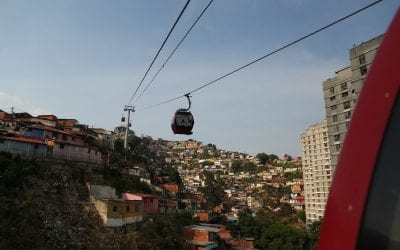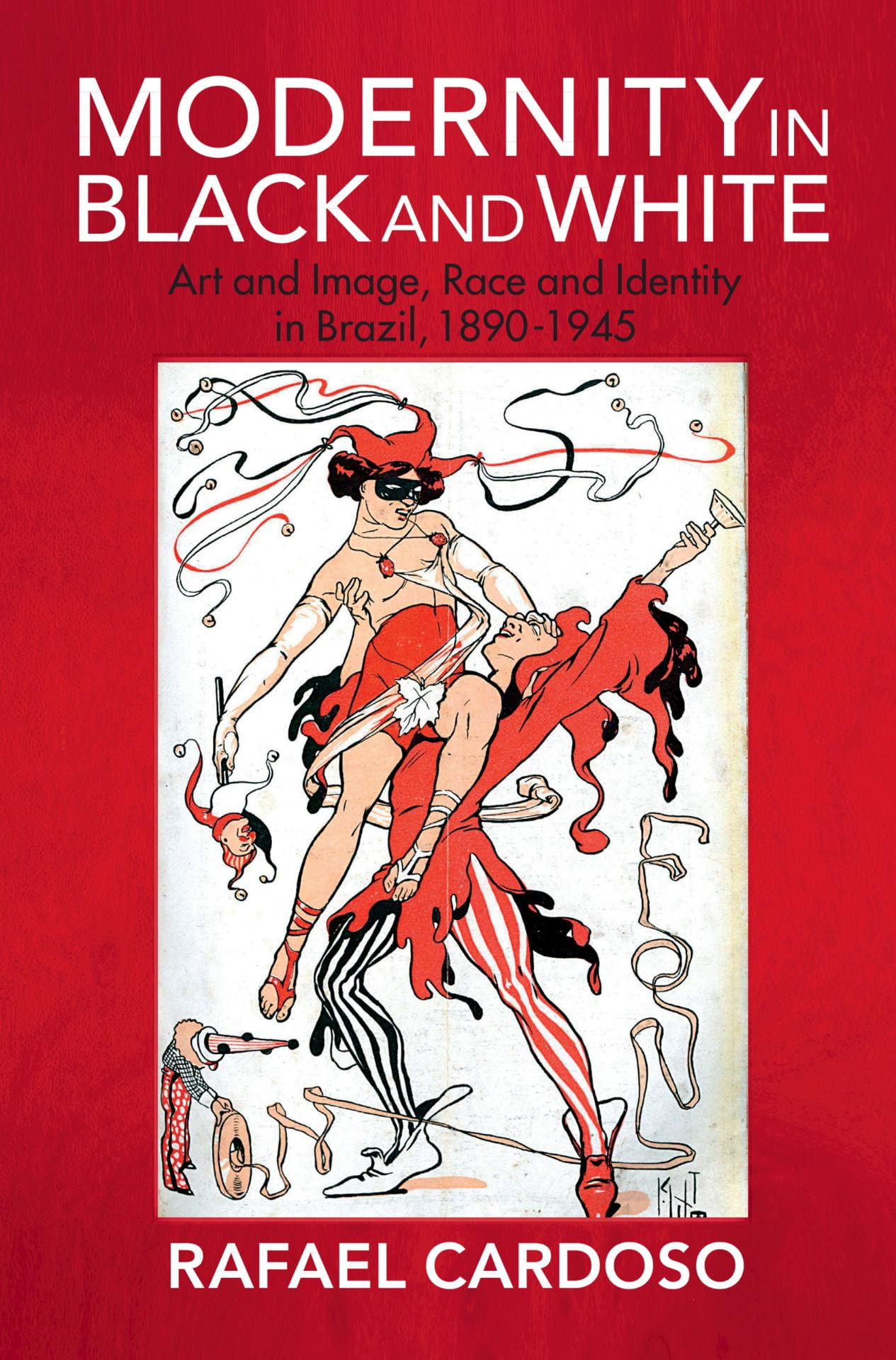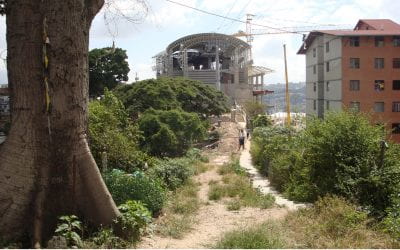A New Way to Participate in Mexico City’s Urban Planning
From Protests to Politics
The two-level Desnivel Mixcoac-Insurgentes underpass was intended to improve traffic conditions in Mexico City’s Circuito Interior, a freeway that circles the municipality’s central regions. Construction was scheduled to begin in late 2014, but civil protests and legal battles stalled the project for several years. Residents in the middle-class neighborhoods of Acacias, Actipan, Florida, Crédito Constructor and San José Insurgentes, where the underpass was scheduled to be built, led the protests.
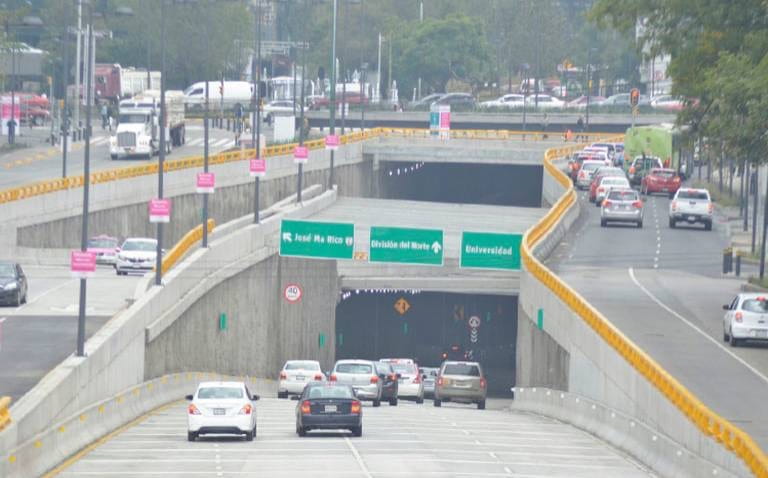
Underpass Entrance. Source
Initially the protests took place during daytime hours. This changed when the city’s public works department (SOBSE) started to bulldoze trees between midnight and 5 a.m. Soon, neighborhood residents extended their demonstrations.
“It was around midnight,” explained Hernández, reflecting on the day she was beaten. “In my mind there were 30 of us, though it was probably fewer. We were occupying what was left of the avenue to stop construction … Suddenly, hundreds of police arrived and surrounded us. There may have been 500 police. We explained that this was a peaceful protest and that we were not violating any rules and that this was our right.”
She identified herself as a congressperson and asked them to leave. Hernández went on to tell me that ten police then surrounded her, beat her up and forcibly removed her and other protestors from the construction site. Battlefield, a protester’s crónica urbana (urban short story), describes how tree “mutilators” defeated the “environmental protectors” at around 4 a.m. that day. “There was a particular smell that night. It was the smell of dead trees, gasoline, the occupiers, chainsaws and burnt resin. But the noises and vibrations had stopped. All you could hear was silence.”
That night, protesters realized that they would need alternative methods to change the transportation project. They decided to move from protests to politics.
Neighborhood residents went on to conduct 100 meetings and 38 site visits with municipal officials, leading to 18 project modifications. The city’s mayor agreed to modify the tunnel’s path in order to preserve a third of the strip’s trees and to enlarge the planned park above the underpass. Government officials quietly opened the underpass on August 29, 2017, without an inaugural event, years after its originally scheduled completion date.
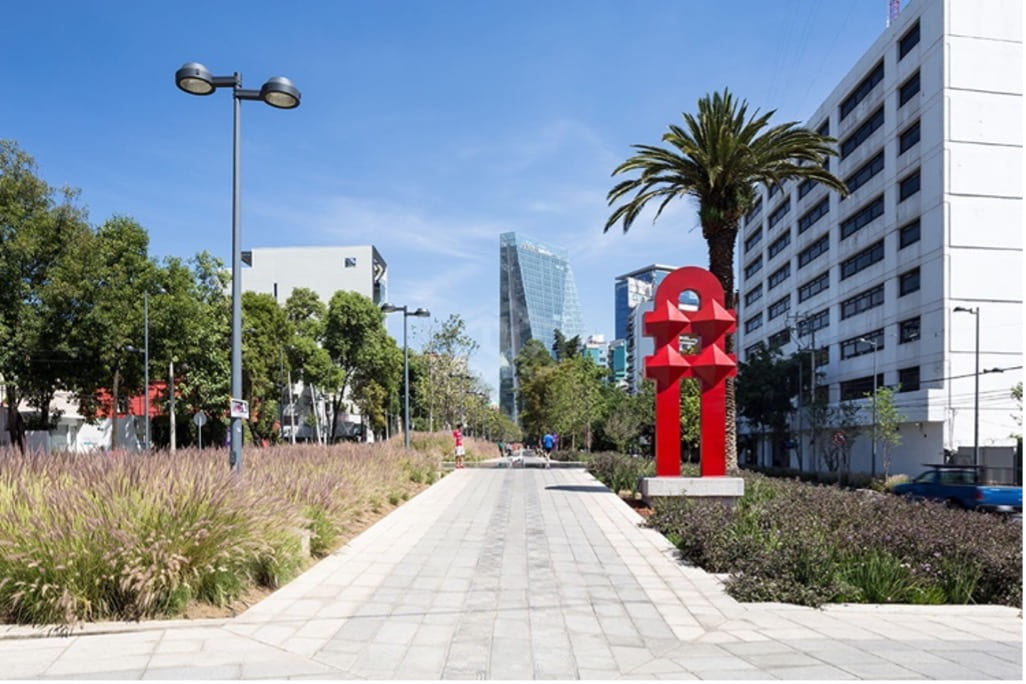
Linear Park Above Underpass. Source
My research analyzes how middle-class residents of Mexico City used the Desnivel Mixcoac protests to negotiate broader livability issues such as taxation, public space development and neighborhood changes. I call this process parallel participation because protesters engaged in urban planning through channels parallel to, but outside of, institutional citizen participation.
Residents rejected formal “participatory” planning mechanisms such as master planning and neighborhood committees. Instead they created a new set of tools by engaging academics, horizontal autonomous municipal institutions, the courts, the media and civil society associations. Protesters used this approach to insert themselves into urban planning decisions from which they had previously been excluded.
I first noticed parallel participation while speaking with Irma Olivo, a protester and resident of a neighborhood adjacent to the underpass. She was in her late 60s and worked as a property manager. She explained that the protesters had become experts in everything from pedestrian-friendly street design to green building to air quality monitoring. During our interview and consequent conversations, I saw the mastery and nuance with which she engaged in planning practices. As a first-year urban planning graduate student at Harvard I had only begun to comprehend concepts that she had expertise in.
We walked into her home office and she showed me a note card with calculations on the back. With a chuckle, she explained the numbers: “I learned to calculate the air quality impact that the pollution from cars would cause once the trees were removed. Can you believe it! We were even calculating air quality and sharing it with the government!”
In Mexico, officials often justify top-down planning by insisting that the general public does not have the specialized knowledge necessary to opine on large-scale projects. Developing this expertise therefore allowed protesters to engage with government actors through ways in which they were previously excluded. Residents further legitimated that expertise by building a coalition of local professionals and academics to support the protest.
For example, four neighborhood residents—a civil engineer, architect, doctor and lawyer—worked together to critique the Desnivel plan. They enlisted a group of scientists from Mexico’s National Autonomous University (UNAM) and the country’s Science and Technology Commission (Conacyt) to independently review the project. Working under the moniker “Environmental Impact Analysis Group-Union of Scientist Committed to the Public (GAMIA-UCCS),” the scientists identified errors in the Desnivel’s original environmental planning and impact evaluations. GAMIA-UCCS later prepared impact reports for several other protests against capital projects in Mexico City.

A piece of a tree that was demolished during the ‘Deprimido Mixcoac’ construction Source: Irma Olivo
Residents also invoked federal and local autonomous institutions such as the Mexico City Human Rights Commission (CDHDF), Mexico City’s Environmental and Territorial Planning Agency (PAOT) and Mexico’s federal Environmental Protection Agency (PROFEPA) to assess the project. Through these institutions, residents made claims that the Desnivel violated their municipal and federal environmental and health rights.
Concurrently, residents generated media attention. Protesters used their contacts to get La Jornada, El Universal, El Financiero and Milenio newspapers, among others, to cover the protests. Nearly all newspaper articles that I reviewed depicted protesters and academics supporting the movement in a positive way.
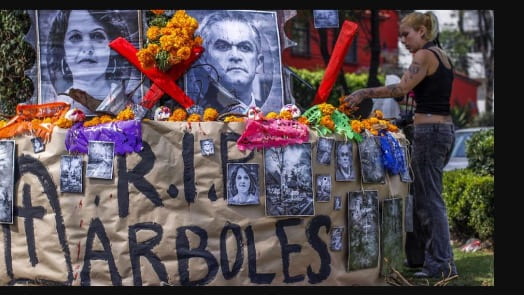
During day of the dead, protester created an altar to mourn the “murdered” trees. Source: Claudia Ramirez
Initially, protesters told me that the movement to halt construction was environmentally motivated. Throughout our discussions, however, other reasons emerged. These included an increase in property taxes, the densification of their neighborhoods and the government’s lack of transparency regarding the beneficiaries of the capital project.
Neighborhood densification and “changes” repeatedly came up in my interviews. One protester told me that the underpass was “obviously intended to serve two large constructions—the Torre Manacar [adjacent to the underpass] and the Torre Mítikah,” which once completed will become the city’s largest building. Residents argued that the underpass would therefore catalyze their borough’s densification and gentrification.
I walked down a street in the Acacias neighborhood and realized why. Nearly a third of the single-family homes had been demolished for new constructions such as three-story apartment buildings. The remaining houses displayed signs and banners demanding that developers obey the street’s low-rise zoning. Neighborhoods like Acacias have become spaces of contention between older, single-family homeowners and recently arrived young professionals who work in the new commercial buildings and reside in the apartments.
Residents therefore used the protests to negotiate broader affordability, livability and neighborhood change by contesting urban planning decisions that favored large developers over city residents. They made their voices heard in spite of non-democratic planning processes.
The movement leaders with whom I spoke had varying opinions about the protest’s success. Some saw it as a failure because the government went forward with the project in spite of citizen demands to halt it. Others, such as Olivo, described modest success, citing a judge’s order prohibiting the government from removing certain trees during the construction. This ruling, argued one informant, was the movement’s greatest success because it demonstrated how courts can side with residents protesting urban projects.
Several interviewees told me that they met with protesters from other parts of the city who hoped to replicate this form of planning. Residents of the Gustavo A. Madero borough in northern Mexico City, for example, met with Mixcoac protesters and ultimately stopped the construction of an elevated highway in a tree-filled region. Mixcoac protesters cited meetings with residents from Copilco and Tlalpan in southern Mexico City as well. In recent years, protests have led municipal officials to cancel several other development projects such as the iconic Corredor Cultural Chapultepec.
Although residents did not stop the Desnivel’s construction, they leveraged their social, cultural and political capital to alter the project. They built a new form of participatory, albeit semi-democratic, urban citizenship. Yet this new form of participation largely excluded the city’s working-class residents. Parallel Participation therefore exacerbates many of the city’s socio-spatial inequities.
The bylaws of the civil society association that protesters established stated that “the [Desnivel] project was developed without consulting citizens and without their consent. One way to mitigate and prevent the project’s possible adverse side effects is to have neighbors and experts co-participate in the process.” Protesters described the inclusion of residents in municipal planning as fundamental to its success, revealing the tensions between the city’s neoliberalization and democratization. During interviews, several participants posed the question: how do we move de la protesta a la propuesta—from protest to proposal?
In 2018, Mexico City residents elected Claudia Sheinbaum from the left-leaning National Regeneration Movement (MORENA) party as mayor—the same party that supported the Mixcoac protesters and to which Citlalli Hernández belongs. Sheinbaum has slightly expanded citizen participation laws and more strictly enforced zoning regulations than her predecessor. Yet she has not built on these protests to include residents in the city’s infrastructural development and planning processes.
Notably, Sheinbaum’s administration developed the 2021 master plan without resident participation. With a hint of irony, the master plan is titled Ciudad de derechos y derecho a la ciudad—a city of rights and rights to the city.
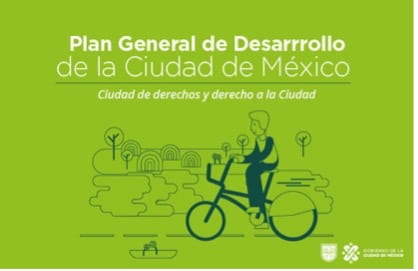
Mexico City’s Proposed Master Plan. Source
The master plan is up for citizen review and residents will decide if it passes into law. Yet the past two master plans, both designed without resident voices and unratified, suggest a similar outcome. Until municipal actors improve formal spaces for residents to participate in urban planning decisions, middle-class Mexico City residents will continue to engage in parallel participation.
I recently spoke again with Olivo, who told me that a group of residents is contesting a plan for their neighborhood park because it was designed without their input. They are producing a conditions report and a design proposal for the open space. “This time, we are becoming experts in landscape architecture,” she joked.
Fall 2021, Volume XXI, Number 1
Related Articles
Editor’s Letter: Transportation
Bridges. Highways. Tunnels. Buses. Trains. Subways. Transmilenio. Transcable. When I first started working on this issue of ReVista on Transportation (Volume XXI, No. I), I imagined transportation as infrastructure.
Modernity in Black and White
For years, one of my favorite pieces in the Museo de Arte Latinoamericano de Buenos Aires (MALBA) was the iconic Abaporu (1928), by Brazilian artist Tarsila do Amaral: a canvas…
Transportation Itself Does Not Build Urban Structures
English + Español
Fina Rojas lives in the 19 de Abril at Petare, the densest and one of the largest self-produced neighborhoods in Latin America. Most researchers and policymakers define self-produced neighborhoods as “informal settlements.” However, these settlements occur from…

